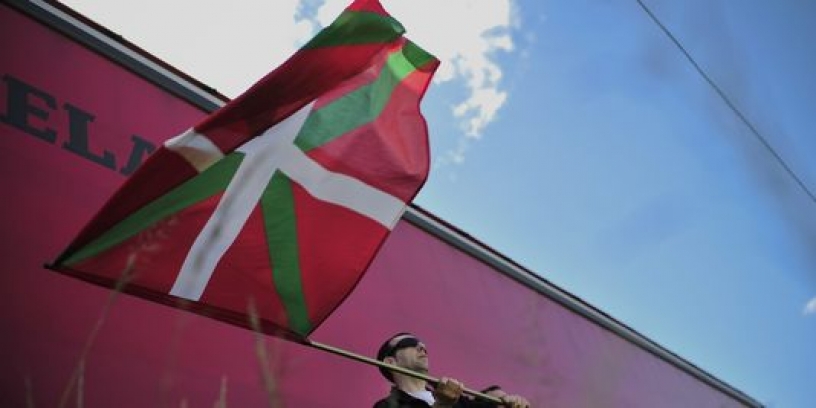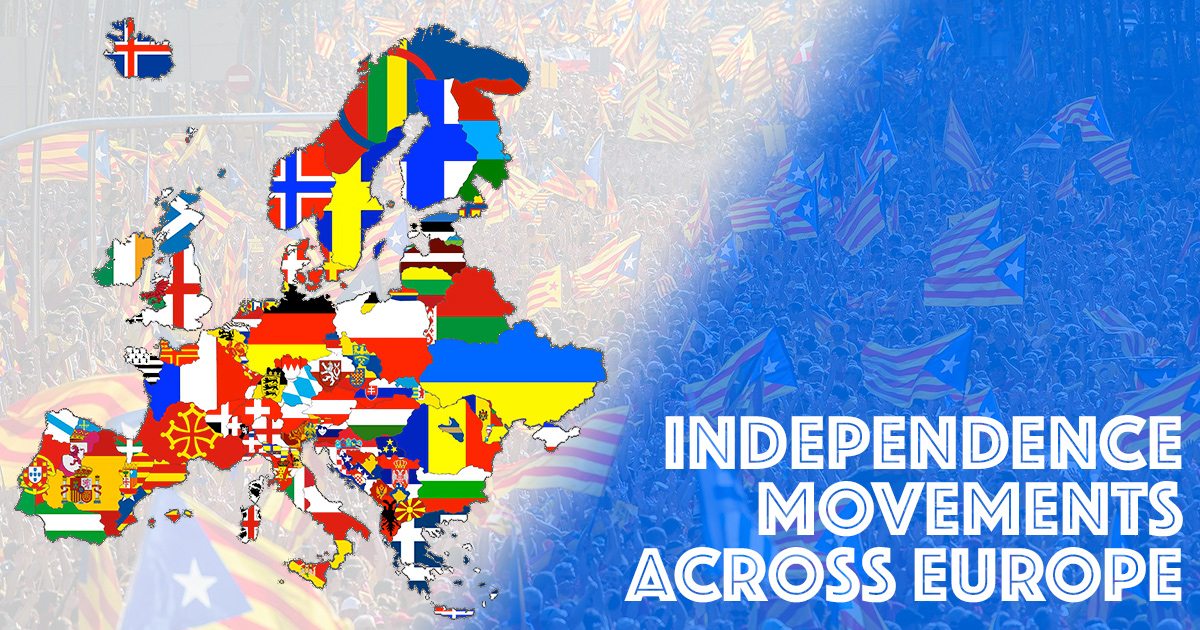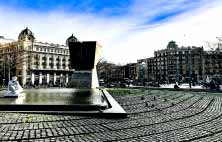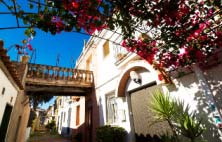Independence movements are becoming more and more common in Europe. After the referendum in Catalonia, the North of Italy organised a referendum on the autonomy of Veneto and Lombardy. More recently, the Corsicans have shown their aspirations for greater autonomy of the island by voting for the nationalist coalition Pè a Corsica.
If you come to visit the capital of Catalonia, we will help you to find the best long term rentals in barcelona. We offer apartments of different types, renovated and well furnished in all areas of Barcelona!
Let’s take a look at these European regions to help understand where this growing desire for independence comes from and to assess whether the Catalan conflict could be repeated in other countries of the European Union.

Scotland
Scotland in a few figures: 8% of the population of the United Kingdom, 8% of UK GDP, 44.7% of the population want the region to become independent (referendum 2014).
Scotland has a strong identity based on a language of its own, Gaelic (official language since 2005) and a culture that the region is very proud of. The fourth constituent nation of Great Britain has around 5.3 million inhabitants.
A region with some independence and a strong identity
For a long time, Scotland enjoyed a degree of independence. However, this ended when the nation became united with England by the Act of Union on 1 May 1707 to form Great Britain. The two separate parliaments were dissolved to create the parliament of Great Britain.
But as early as 1853, demands were made for the return of a Scottish parliament. However, it was not until 1998 that their wish was granted and a new Scottish parliament was created.
The Scottish National Party (SNP) created in 1934, became more and more important in this part of Britain to such an extent that in 2007, they managed to form the first pro-independence government in the region (albeit a minority one).
The disappointment of the 2014 referendum
The party became increasingly successful, which brought the question of Scotland’s independence to light. The Prime Minister of Britain and the Scottish Prime Minister, Alex Salmond, signed the Edinburgh Agreement on 15 October 2012 which would allow a referendum to be held in 2014.
However, the result was unexpected by the SNP. The ‘No’ vote won (55.3%), destroying any hope of independence. Nicola Sturgeon (SNP) took over the leadership of the region and promises to continue to fight for independence.
The situation is complicated after Britain voted to leave the European Union (EU). While Brexit prevails, the Scots disagree with the result and show their willingness to remain in the EU. According to Nicola Sturgeon, this is another reason to reorganise a referendum on the independence of Scotland in 2018.
To learn more about this topic, take a look at the article below:
-
 Scotland in search of independence One of the European regions that dream, like Catalonia, of a form of independence.
Scotland in search of independence One of the European regions that dream, like Catalonia, of a form of independence.
Excursions in Barcelona
To make the most of Barcelona and fill your trip with unforgettable experiences and emotions, we offer you the excursions through the Catalan capital organized by our friends - the GetYourGuide team. Choose your excursion and fall in love with Barcelona:
Flanders
Flanders in a few figures: 57% of the Belgian population, 57% of the Belgian GDP, 30.2% of votes for the pro-independence party (September 2017).
Carles Puigedemont did not choose to take refuge in Belgium by chance. The Plat Pays also has an important independence movement, which welcomed the the Catalan leader with open arms.
A new country whose unity is soon questioned
These tensions are explained particularly by the youth of the country. Thus, it was not until 1830 that Belgium was born. Soon, troubles arose between the different linguistic groups in the small country, the Flemings feeling set aside.
In the Belgian political scene, organisations aiming to create an independent Flemish state, such as the Verdinaso (1931) and the Vlaams Nationaal Verbond (1933), appeared on the scene.
The degree of autonomy in Flanders progressively increases while the independence parties (such as the Volksunie) progress in the polls. A Flemish Parliament was created in 1980.
In 2010, the Flemish separatist party N-VA was highly successful in the federal elections, which caused an unprecedented political crisis. They were unable to form a government as the majority could not agree and refused to have any alliance with the Flemish separatist party, forcing Belgium to survive for 541 days without government.
The Catalan conflict divides Belgium
Today, the Flemish independence party (N-VA) is at the head of the country with two other Flemish parties (CD & V and Open VLD) and a French speaking party (MR). Even if their independence speech is softened somewhat, the N-VA does not miss an opportunity to reopen the debate and create tension within the government.
The Catalan conflict was a golden opportunity for the independence party, which did not hesitate to speak in favour of the Catalans. However, the Belgian government (of which the N-VA is part of) had officially declared to support the Madrid government and Mariano Rajoy, refusing to recognise the referendum and its results on 1 October. The Secretary of State for Asylum (N-VA) invited the Catalan separatists to come to Belgium, expressing their indignation at the treatment they were receiving in Spain and going against the official position they were supposed to adopt.
To learn more about the topic, take a look at the article below:
-
 Flanders in search of independence One of the European regions that dreams — like Catalonia — of some form of independence.
Flanders in search of independence One of the European regions that dreams — like Catalonia — of some form of independence.
Northern Italy
Northern Italy in a few figures: 25% of the Italian population, 30% of the Italian GDP, 90% of the population voted in favour of more autonomy in the last referendum (October 2017).
In a similar way to Belgium, Italy is a relatively young country. This is why there are strong independence movements here as well. They are mostly found in Northern Italy, especially in Veneto and Lombardy, with a combined population of 15 million.
Italy’s richest region
It was in 1861 that the Kingdom of Italy was born. However, Veneto only joined in 1866 following a referendum. The North of Italy will soon be subject to a large migration movement (from South to North), the region offering a large number of jobs.
This is part of the reason why the independence movements appeared in the North of Italy: the economic well-being of the region and the migrations to the regions. The nationalist movements regrouped in 1989 to form only one party, the Northern League.
New problems for the separatist party
Following various internal problems, the independence party is forced to make radical changes to reclaim its electorate. The Northern League no longer talks about independence but rather about autonomy for its region and has made immigration its main topic of discussion (in particular, that there are too many foreigners in Italy).
The Northern League still organised a referendum in October 2017 (three weeks after the one held in Catalonia) to ask the population of Veneto and Lombardy if they wanted greater autonomy for the region. The majority of inhabitants voted in favour of autonomy (90% of the votes) proving that there is still a real desire for autonomy, even independence, in these regions of Northern Italy.
To learn more about this topic, take a look at the article below:
-
 Veneto and Lombardy in Search of Independence What are the European regions that dream, like Catalonia, of a form of independence?
Veneto and Lombardy in Search of Independence What are the European regions that dream, like Catalonia, of a form of independence?
Corsica
Corsica in a few figures: 0.5% of the French population, 0.4% of French GDP, 56.5% of the votes won by the nationalist coalition in the territorial elections of December 2017.
The French island has never hidden its desire for autonomy, even independence. In December 2017, the nationalist coalition Pè a Corsica won 56.5% of the votes in the territorial elections.
But the region, which has more than 350,000 inhabitants, has said for some time now that it has the right to be in control of its own destiny.
Independence using weapons
It was in 1753 that the region attempted to declare its independence from Genoa for the first time, however they did not succeed. The island only managed to obtain a blockade in retaliation. Corsica was then bequeathed to France, however their troubles didn’t stop there.
The Aleria affair (August 1975) marks the beginning of the radicalisation of Corsican nationalist movements. Attacks began to be organised in parallel to when the National Liberation Front of Corsica (FLNC) was born in 1976. It was not until June 2014 that the FLNC officially announced to have laid down their weapons, leaving the political parties to claim independence of the region without resorting to violence.
To date, the various nationalist parties have come together in a coaltion calling for greater autonomy for Corisca, Pè a Corsica. This autonomist movement was created in 2015 and led by Gilles Simeoni. Its leader has been named president of the executive council of Corsica following a victory for the party in the elections in 2015.
Endless success for the nationalists
Following the French legislative elections in 2017 when the coalition won, once again, was a great success allowing three members of Pè a Corsica to enter the National Assembly. It was the first time a nationalist party managed to get three out of four seats for Corisca in the French legislative body.
But that’s not all. In December 2017, Pè a Corsica won the territorial elections with 56.5% of the votes, reinforcing its presence in the Corsican Assembly. Jean-Guy Talamoni, independence president of the assembly of Corsica from the Pè a Corsica coalition, spoke after the poll, asking Paris to “open negotiations very quickly” and threatening to organise “popular demonstrations” and to “tour European capitals” if they were “denied democracy”.
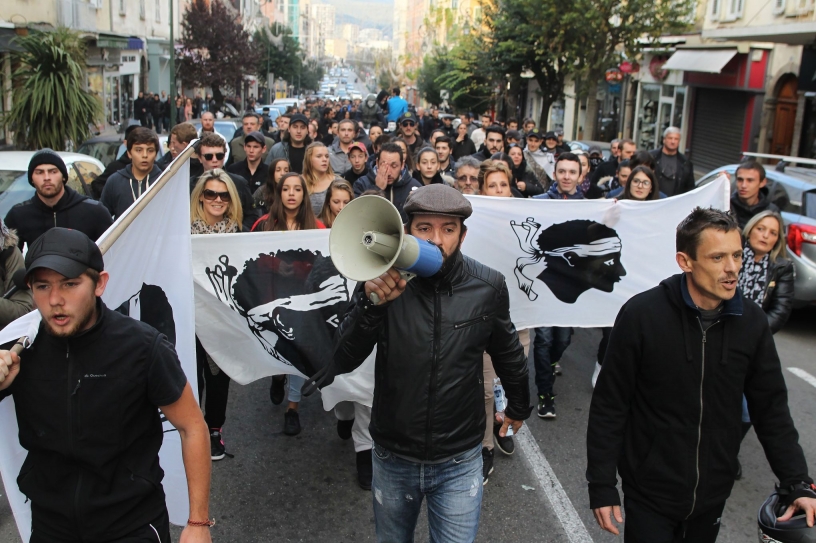
The Basque Country
The Basque Country in a few figures: 5% of the Spanish population, 20% of Spanish GDP. 29 seats for the Basque nationalist party in the regions parliament (since 2015).
Although the situation has calmed down in recent years, the question of the independence of the Spanish region of about 2.2 million inhabitants has not quite gone off the radar. In 1512, Navarre became part of the Kingdom of Castile and Arragon.
It was not until the end of the nineteenth century that a Basque independence movement emerged, opposing the creation of a centralised Spanish state. A political party, the EAJ-PNV was created by Sabino Arana Goiri, who is now considered as the founder of Basque nationalism, to defend independentist ideas.
A region marked by terrorism
The Spanish region obtained autonomy in 1936 thanks to the demands of the EAJ-PNV which governed the first Basque government. However, then came the reign of Franco, who did not spare the separatists. This led to the formation of the separatist organisation ETA (“Euskadi Ta Askatasuna”).
The Basque Country then entered what many consider to be the darkest moment in history. Until the official announcement of its termination in 2011, ETA committed no less than 800 murders, to such an extent that the organisation was considered terrorist by the European Union until 2010.
Today, the Basque people are only fighting politically to achieve independence. Furthermore, they are not necessarily fighting for independence, rather more autonomy. The government of the region is currently run by the Basque Nationalist Party (now called PNV) and the Basque Socialist Party.
Catalan conflict provokes tensions
If independence is no longer what the nationalists want, it is mainly because the Basque Country already has some autonomy. It could even be the most autonomous European region. The Basque government is free to collect and manage its own tax, but also manages matters related to education, health and police.
The Spanish Basque Country is also in a favourable position since Rajoy’s government needed their support to stay in power. However, the Catalan conflict has somewhat awakened the old tensions between the Basque region and Spain since the nationalist party denounced the police violence that took place on 1 October during the referendum. The five deputies of the PNV have also announced that they would not vote for Rajoy’s General State Budget in 2018 in light of the situation.
